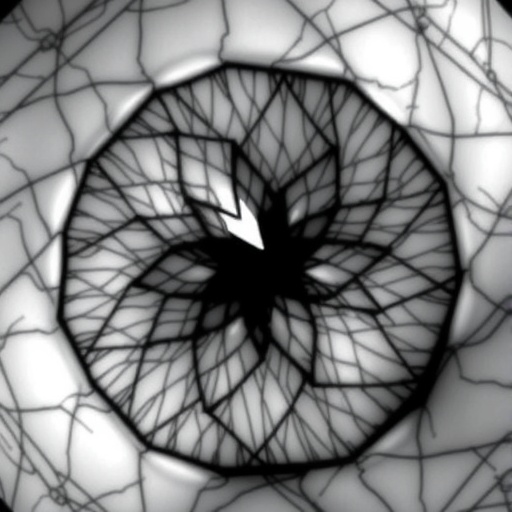In a groundbreaking study published in “Advances in Therapy,” researchers have illuminated the complexities surrounding the diagnosis of Primary Ciliary Dyskinesia (PCD) in utero. PCD, a rare genetic disorder often characterized by dysfunction in cilia, presents significant challenges for families aware of their child’s potential health complications before birth. The study conducted by Amirav et al. brings forward a nuanced view of how early identification of PCD can impact family dynamics, medical planning, and patient outcomes.
The authors delve into two familial cases that illuminated the potential for identifying PCD prenatally. This can be crucial as early intervention may mitigate some complications associated with this disorder, which is often linked to severe respiratory issues and fertility problems later in life. The insights drawn from the families studied provide a framework to understand the varying manifestations of the disease and the psychological toll that such diagnoses can inflict on families.
Within the discourse surrounding genetic conditions, PCD adds a layer of complexity due to its often subtle presentation. Families may find themselves navigating a maze of concerns—from understanding the intricacies of the disease to addressing emotional and psychological implications. This study not only enhances medical practitioners’ understanding of how prenatal diagnoses can alter life paths but also delves into how knowledge of such a condition influences familial attachment and preparation during pregnancy.
Moreover, the research highlights the technological advancements in prenatal testing that have made it possible to detect conditions like PCD earlier than ever before. Employing techniques such as non-invasive prenatal testing (NIPT), healthcare providers can identify genetic anomalies through maternal blood samples. Ultimately, this fast-paced field requires continuous updates and adaptations in both the medical community and their patient interactions to harness the capabilities of these technologies fully.
Emphasis is placed on how each family’s response to the diagnosis can vary significantly based on their unique background, emotional support systems, and personal beliefs. The families showcased in the study revealed an array of approaches toward coping with a diagnosis of PCD, ranging from proactive engagement with healthcare providers to grappling with feelings of uncertainty and grief. This diversity in response complements the notion that prenatal diagnoses must be managed with a sensitive approach tailored to individual family contexts.
Another critical aspect of the study is the discussion surrounding the medical management of PCD in prenatal settings. The authors argue that early diagnosis allows for informed decision-making regarding delivery methods and immediate neonatal care. Understanding the probability of respiratory issues, for instance, allows healthcare professionals to provide tailored care from birth. By planning with foresight, the medical community can potentially reduce the severity of respiratory effects that typically surface in infants diagnosed with PCD.
As the conversation unfolds, the ethical dimensions surrounding prenatal genetic testing also arise. Women and families should be equipped with balanced information highlighting the positives and potential complexities that come with a diagnosis. Ethical considerations should underpin the discussions that ensue when parents are presented with testing options, emphasizing informed consent while ensuring families understand their rights and the implications of knowing a prenatal diagnosis.
Moreover, this study serves as a valuable addition to the existing literature on PCD by bridging gaps between clinical practice and family experiences. By showcasing real-life implications of prenatal cilia-related diagnosis, the authors underline the need for continuous dialogue between specialists, genetic counselors, and expectant families. This dialogue is essential to ensure families receive comprehensive and compassionate care as they navigate challenging medical landscapes.
The researchers urge that more investigations should be conducted to evaluate long-term outcomes of children diagnosed with PCD in utero. Such studies will help create a more robust understanding of how early identification impacts not just immediate medical management but also subsequent life trajectories of these children. With technology advancing at an unprecedented rate, the role of predictive analytics in the health sector becomes ever more significant.
As scientists continue to develop our understanding of genetic disorders, the implications for future research become increasingly vital. This includes the exploration of therapeutic avenues for managing PCD and potential interventions that can be initiated even before birth. The landscape of prenatal treatment is rapidly evolving, and as more data becomes available, opportunities to improve health outcomes for individuals with PCD may expand.
The implications of this research extend beyond the scientific community. By fostering awareness of conditions like PCD, outreach can enhance public understanding and drive funding toward further research focused on rare genetic disorders. Increased visibility can also promote support networks for families affected by PCD, allowing them to connect, share experiences, and cultivate resilience in navigating their healthcare journey.
In conclusion, the research by Amirav et al. signifies a pivotal moment in the discussion surrounding prenatal diagnoses. The complexities of not only the genetics of PCD but also its societal implications illustrate a critical need for interdisciplinary collaboration within the medical community and beyond. The transformative potential of early diagnosis—as highlighted in these cases—offers a beacon of hope for families, suggesting that with the right support and medical foresight, the future can look brighter for those facing the challenges of Primary Ciliary Dyskinesia.
Ultimately, this pivotal study not only enhances our understanding of PCD but serves as a launchpad for deeper conversations about prenatal testing, the evolution of care practices, and the combined efforts needed to improve quality of life for future generations.
Subject of Research: Prenatal Diagnosis of Primary Ciliary Dyskinesia (PCD)
Article Title: When Primary Ciliary Dyskinesia Is Diagnosed in Utero: Insights from Two Families
Article References:
Amirav, I., Beer, M., Redlich Amirav, D. et al. When Primary Ciliary Dyskinesia Is Diagnosed in Utero: Insights from Two Families.
Adv Ther (2025). https://doi.org/10.1007/s12325-025-03298-1
Image Credits: AI Generated
DOI: 10.1007/s12325-025-03298-1
Keywords: Primary Ciliary Dyskinesia, Prenatal Diagnosis, Genetic Disorders, Early Intervention, Family Dynamics, Ethical Considerations, Medical Management, Non-Invasive Prenatal Testing.




